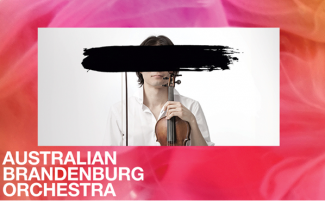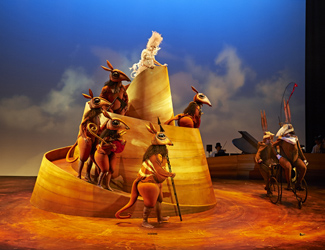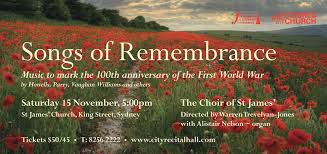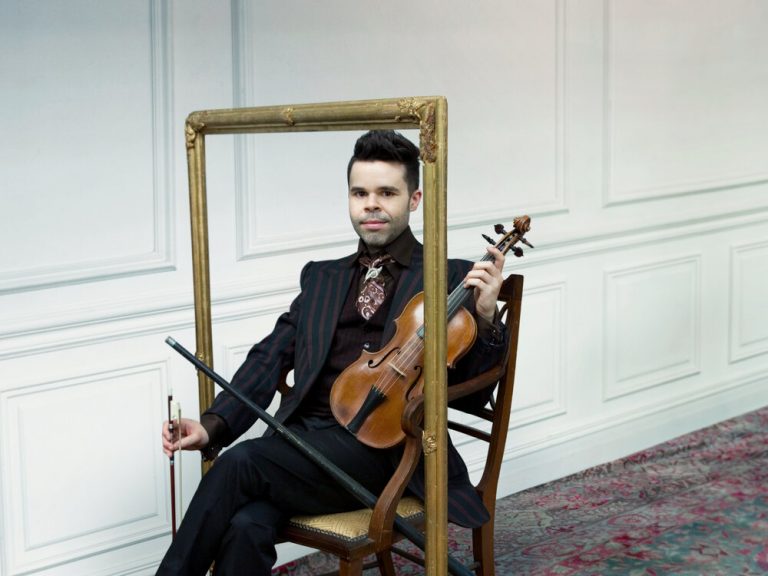Concert Review: Sato and the Romantics/Australian Brandenburg Orchestra
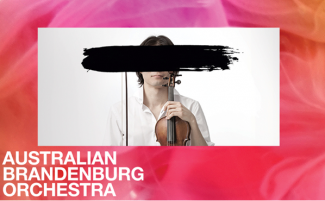
Australian Brandenburg Orchestra
Violin soloist Shunske Sato, Artistic Director Paul Dyer
7 September 2016, City Recital Hall, Angel Place
Written by Larry Turner
The Australian Brandenburg Orchestra’s Artistic Director, Paul Dyer, continually searches for new repertoire for the ABO or new perspectives for familiar repertoire. In the fourth concert of their 2016 series they left their eighteenth century homeland and tackled three works from a century later. Remaining true to their musical philosophy, however, they transformed their playing style, adopting vastly different nineteenth century practices. They also used period instruments with gut strings which differ from the modern steel strings routinely used by mainstream orchestras for nineteenth century music.
The string ensemble in the first half of the concert fielded more players than the ABO regularly uses. This produced a broader sound than usual, but the trade-off was at the expense of the ABO’s normal incisive accuracy. The orchestra was led from the first violin by the American violinist Shunske Sato. Now based in the Netherlands, Sato is the concertmaster of Concerto Köln and the Netherlands Bach Society. In this latter role he can frequently be seen and heard in the weekly online videos released by the Netherlands Bach Society in their long-term project of producing first-rate video performances for the complete works of J.S. Bach.
The concert opened with the String Symphony no. 3 by Mendelssohn, written when he was a 12 year child prodigy. Mendelssohn’s family played an influential role within a Berlin circle which promoted the ‘old’ music of Bach and Handel, and the fugal style of the symphony’s opening movement showed the influence of those composers. The Mozartian second movement and dramatic final movement were well dispatched by the orchestra. Their historically accurate minimisation of vibrato, however, sometimes exposed differences of intonation.
Grieg’s Holberg Suite, subtitled Suite in an Old Style, was written in 1884 to celebrate the 200th anniversary of the Norwegian poet Ludvig Holberg. Grieg deliberately wrote in a pastiche style: a nineteenth century reinterpretation of a baroque orchestral suite of dance movements. This work received an extraordinary performance. Ever since the early music revival movement took off some fifty years ago performances of the Holberg Suite have treated it as a latter-day baroque composition with clean lines, metrical tempi and pointed rhythms.
Grieg, however, intended the work to be played by a large string orchestra and he would have expected the playing conventions of his day to be observed. Sato’s interpretation returned to this. The result was a performance which resurrected the now discarded conventions of the late nineteenth century: frequent portamento (which sounds to modern ears like ‘scooping’), extensive rubato (‘timing all over the place’), dramatic pauses and widely contrasting dynamics. It was a performance to divide opinions. Being so different from the normal current performance style, not everyone found it congenial. But as a recreation of late nineteenth century romantic playing it was a fascinating exercise.
In the second half of the concert Sato was the soloist in Paganini’s Violin Concerto no. 4 with an enlarged orchestra conducted by Paul Dyer – who also displayed his talent as an amateur triangle player. In this work the role of the orchestra is distinctly subordinate to that of the soloist and the excellent program notes by Lynn Murray quote Paganini as saying ‘I only use it to fill the gaps between my solo passages so that I can get my breath’.
The concerto is a work of dazzling solo fireworks which the composer Louis Spohr said ‘alternately charms and repels’, a mixture of ‘genius, childishness, and lack of taste’. Certainly it requires a real virtuoso who can comfortably handle its exceptional demands. The soloist’s opening passage, for example, spans a range of four octaves.
After the orchestra’s broad and confident introduction Sato launched into the solo part with a passion and energy that matched the accounts given of Paganini’s own playing. It was not difficult to believe that such playing prompted rumours of Paganini’s pact with the devil. Technical difficulties were piled one on top of another with lightning figuration, octave trills, page after page of double and quadruple stopping and concurrent bowing and left hand pizzicato. This culminated in the pyrotechnics of the first movement cadenza in which Sato demonstrated that he was master of all the technical challenges. Furthermore, all of this was played on a gut string period violin. The audience was overwhelmingly impressed and the applause started even before the orchestra finished the movement’s brief epilogue. It was an astonishing display.
The brief second movement provided a contrast with enjoyable legato playing before Paganini’s catalogue of extraordinary technical challenges continued in the last movement. If there were brief moments of human frailty this was without doubt an astounding display of amazing technical mastery.
Throughout the concert we were treated to changes of stage lighting which represented someone’s idea of portraying the ongoing character of the music. It lacked subtlety and was a frequent distraction from the actual performance.
This memorable program is being repeated in both Sydney and Melbourne until 17 September and violin aficionados, in particular, are urged to take the opportunity to hear a recreation of nineteenth century playing styles and a spectacular display of violin virtuosity.
Larry Turner for SoundsLikeSydney©
Larry Turner is an avid attender of concerts and operas and has been reviewing performances for Sounds Like Sydney for several years. As a chorister for many years in both Sydney and London, he particularly enjoys music from both the great a capella period and the baroque. He has written programme notes for Sydney Philharmonia, the Intervarsity Choral Festival and the Sydneian Bach Choir and is currently part of a team researching the history of Sydney Philharmonia for its forthcoming centenary.

